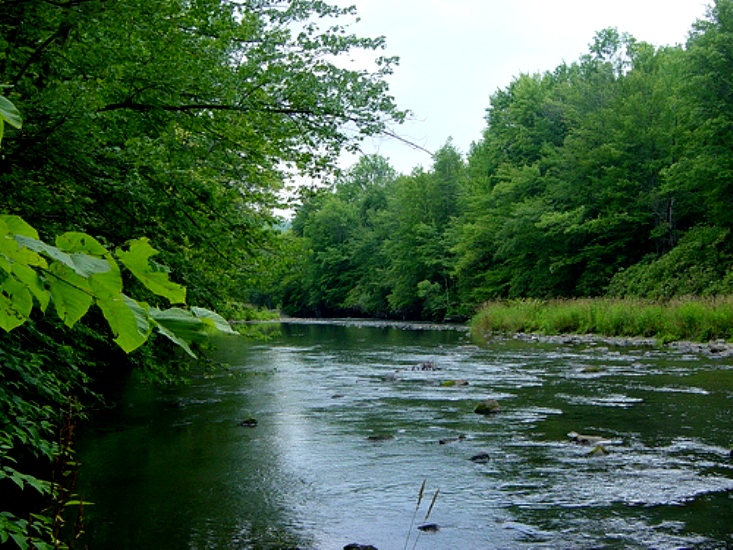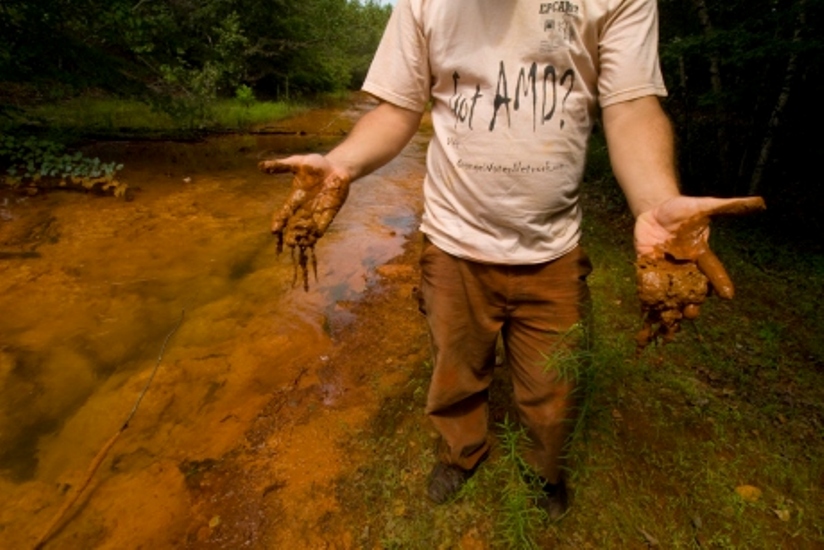Watershed Wednesday: Lackawanna River Corridor Association (Lackawanna County, Pa.)
This watershed group is cleaning up the mess that coal mining has left behind.
Five thousand cubic yards of demolition waste and bricks are scattered around an oil truck that is lodged into a hillside. The mess was left behind long ago, and the Lackawanna River Corridor Association (LRCA) is doing everything it can to clean it up.
The mess sits on land that borders the Lackawanna River, a northeastern Pennsylvania tributary to the Susquehanna. The trash has caused the river’s water quality and wildlife habitat to deteriorate, but a Lackawanna Greenway initiative will clean up this riverside land and open it to the public, giving bikers and pedestrians a chance to enjoy their local waterway.
Trail construction is being managed by LRCA’s partner, Lackawanna Heritage Valley Authority.
“We hope to provide an outlet for recreation for everybody in the community,” explained LRCA Executive Director Bernie McGurl. “It’s a way for people to walk to work, and it also increases property values.”
While two miles of the completed trail run through downtown Scranton, Bernie calls this a “lifelong project.” There is still much work to be done!

Image courtesy Lackawanna Heritage Valley Authority
“Cleaning” coal
Northeastern Pennsylvania contains some of the largest anthracite coal mines in the world. While coal once contributed to the economic growth of cities like Scranton, coal mining has also left behind a number of environmental problems. Some of them, like LRCA’s recently acquired coal-dumping ground, are visible; others live out of sight, underground, in abandoned mines.
There, stormwater percolates.
“We have a huge body of water in the abandoned mines underneath Scranton,” said McGurl. “It’s about the size of Lake Wallenpaupack and holds about 100 billion gallons.”
“Imagine Manhattan’s subway system on steroids,” McGurl continued. “It’s 1,100 feet deep… and then filled with water.”
But keeping the water underground is not an option. Trapped, it would be left to flood basements and low-elevation residences in many parts of Scranton. So the mine water is released into the Lackawanna River through this borehole at a rate of 100 million gallons of water per day.

Image courtesy Miguel Angel de la Cueva
The water coming from the coal mines is high in iron; three to four tons are discharged into the Lackawanna River each day from this borehole. Iron robs the water of dissolved oxygen, which fish and other aquatic wildlife need to survive.
Iron forms orange, red and yellow slime on the river’s banks and rocks. Other minerals, like aluminum, are also discharged into the river through the borehole.
While the borehole is necessary to prevent flooding, LRCA and other organizations have long been discussing alternative solutions. Some have considered constructing a mineral harvesting plant downstream of the borehole. This would remove minerals from the water and allow them to be sold to electric-generation and geothermal companies.
While the demise of the coal era has left Scranton and surrounding areas with environmental and economic struggles, Bernie and his team at LRCA remain hopeful.
“I like to use the river and the water that flows through the river as a metaphor, speaking to how we relate to each other and what our values as a community are,” explained Bernie. “It tells everyone downstream what we value and the environment that we live in.”
The organization celebrates its 25th anniversary this year. From working with the Scranton Sewer Authority to revamp the city’s combined overflow system to transforming abandoned coal sites into recreation areas, Bernie and his team have accomplished a tremendous amount in just a quarter-century.
More from the Lackawanna River Corridor Association:
- LRCA is cleaning up an abandoned mine site in Old Forge, Pa. This 30-acre Brownfields Cleanup project will remove coal waste piles, install a new stormwater drainage system and plant native plants on the site.
- Photographer Miguel Angel de la Cueva documented the effects of coal mining in the region with photographs and stories.
- The Lackawanna Valley Conservancy works with LRCA and property owners to preserve land in the watershed.
- Learn more about coal mining with these rare underground mine photos.

Comments
There are no comments.
Thank you!
Your comment has been received. Before it can be published, the comment will be reviewed by our team to ensure it adheres with our rules of engagement.
Back to recent stories